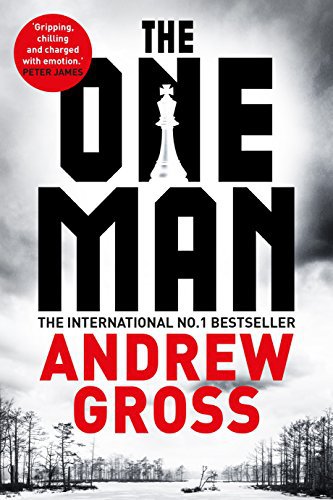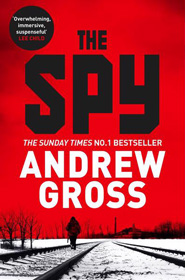In the years between 1880 and 1920, over twenty million immigrants came to the United States, and THE LAST BROTHER is the story of one of them.
A rough, determined kid from Poland who grew up on the Lower East Side, quit school at twelve to apprentice in a garment factory to help support the family and grew to run that factory by the time he turned twenty-one; who battled the unions which were controlled by the ruthless Jewish mob (and was proud to show off the knife wounds in his abdomen, courtesy of Louis Lepke’s henchman, Jacob Gurrah, to prove it;) and who grew the fledgling dress firm he named after his daughter into an iconic, national brand.
That man was my grandfather.
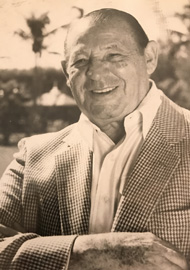
It’s a first generational story that could be told by many American families, whether their “heroes” turned out to be doctors, lawyers, dry goods retailers, teachers or garment men. But Freddy Pomerantz was the hero of our family tale. For the hundreds of thousands of immigrants who crowded the bustling and impoverished Lower East Side, there were two ways out: one was the garment trade, and the other crime. The neighborhood was the most overcrowded area in the world in those days, denser even than Calcutta. Every cramped tenement apartment was jammed with two or three families, and had the whir of sewing machines and the hiss from sweltering steam irons sounding deep into the night, as housewives, after they had cooked and cleaned the evening meal, took on piece work from the factories to supplement whatever money their husbands brought in. Outside, the streets were just as dense, jammed with hundreds of pushcarts with merchants hawking anything of value in a cacophony of Eastern European languages. And this chaotic world was also a world governed by crime. Every corner had illegal gambling scams preying on unsuspecting rubes just off the boat. Young women who didn’t want to end up behind a sewing needle became prostitutes in back alleys. Youths who traveled out of the neighborhood whether to school or jobs had to pay protection money to brash street toughs who held off the German and Irish, and even Jewish thugs who’d like nothing more than to roll a young boy in long curls and yarmulkes coming home from the factory floor.
“Don’t let the yarmulkes fool you,” a mother says in the book. If you grew up there, you grew up tough.
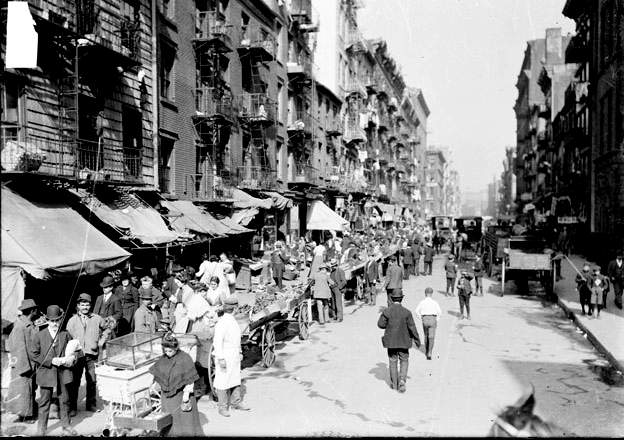
LOWER EAST SIDE
There were two classes of Jews in the early 1900’s: the rich German Jews, many who had emigrated here with wealth a decade or two before, and established themselves in fields like banking, retailing and real estate. And then there was everyone else: Russian. Polish. Hungarian. Who wore their side curls long, grew their beards out, rarely bathed, and spoke in unfamiliar accents.
And this is the world in which THE LAST BROTHER begins, the story of the three Rabishevsky brothers, turned Raab: Sol, brainy and level-headed, who drops out of accounting school when their father dies; Morris, tall and strong, unafraid to use his fists; with an unrelenting drive to succeed and an unbreakable moral core; and Harry, scarred forever by a family tragedy he feels he caused, who is seduced into a life of crime.
It’s also the story of Louis Buchalter, alias Lepke, who rises from the same streets to form a feared gang, who extorts and murders with the same ease with which others shake hands, and who, with his partner Jacob Gurrah, steadily rises through the underworld of crime. Around them is a cast of real-life characters both criminal and law-enforcing: the unpredictably violent Dutch Schultz, who no one can trust, and the determined Thomas Dewey, the newly-appointed special prosecutor in New York, single-minded in his mission to put Schultz and Lepke away for good. And in the end, there is only one person who can make that happen: Morris Raab.
Maybe some of you know that three books ago I made a shift of genre from what I call “suburban” thrillers and started writing historically-based ones. My first two were set in WWII, THE ONE MAN, based on my father-in-law’s tragic experiences in the Holocaust, and THE SABOTEUR, about Allied attempts to keep Germany from beating us in the race for the atomic bomb. My goal was to write stories of broader themes and greater heft. Still, THE ONE MAN and THE LAST BROTHER are, at heart, family stories. And my principal mission these days is to put a voice to this honored, family lore. I describe THE LAST BROTHER as kind of: Great Expectations meets The Godfather. Dickens’s novel because it’s a big, sweeping, thirty year story of a boy’s growth into manhood set against the background of class struggle and crime. And The Godfather, obviously, for it’s depiction of organized crime and its uniquely cultural background—in this case, the Jews.
In the 1920’s and early Thirties, the Jewish mob was by far the toughest and most feared criminals in New York City: names like Abe Reles, Arnold Rothstein, who fixed the 1919 World Series, Meyer Lansky, Lepke, Schultz, and Bugsy Siegel were both the most charismatic and the bloodiest mobsters around. Back then, the Italian mob actually farmed out their hits to the Jews who turned it into a business, hence the name, Murder, Incorporated. “You supply the poppers,” Albert Annastasia tells Lepke in the book, meaning the guns, “and we’ll supply the inventory.” In many ways, the novel is the story of these killers too: violent, wildly charismatic, larger than life. This was their way out too.
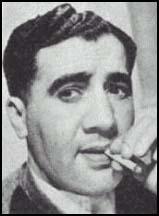

ABE RELES & ARNOLD ROTHSTEIN
Now, when I first planned out this book, I went to the library of the Fashion Institute of Technology in New York, and met with Karen Trivette, head of the archives there. I was looking for background on the early years of the garment business, and she turned me on to microfilm of old issues of Woman’s Wear Daily dating back to the 1920’s and 30’s, and a couple of beat-up, first-person accounts that looked like they hadn’t been checked out in decades. She also gave me a gift I will never forget: “Many of the founding fathers of the industry have recorded their own stories on tape,” she informed me, “as part of the permanent archives here. Your grandfather was among them. Would you like to hear it?”
And that is how thirty years after his death, I heard my grandfather’s voice all over again. Uttering the phrases that were always part of the gruff, street-honed way he talked: “You hear what I’m saying to you, don’t you...?” and, “So help me God, it’s as if it happened just the other day.” And, “So to make a long story short...” Which he never did. As real and familiar as if he was sitting in front of me, in his den or at the club, and I was a kid again, no older than the age he started out himself in business, and he would look me in the eye and tell me with such conviction that I grew to believe it myself and still do to this day: “You can do anything you want in life, anything—if you want to do it badly enough.”
For men like that, it was just that simple.
I actually knew many of the “founding fathers” Karen spoke of. Before I started writing, I was in garment trade myself for a bit. By that time, Leslie Fay, my grandfather’s firm had grown into a large, diversified, company on the NYSE run by my uncle, John. But those early machers who rose up from the streets, who founded firms like Jonathan Logan, Bobbie Brooks, R&K, Russ Togs, and Leslie Fay, that came to dominate the women’s clothing business from the 40’s to the 80’s, they were the toughest men I knew. Killers, people referred to them as—in both a feared and yet affectionate way. If they yelled at you they could make you pee in your pants. Animals. Feared. But respected. And loved. They all had this, my grandfather would say, snapping his fingers. “And you can’t learn it at Harvard.” Tough as nails, completely single-minded in their drive, but still capable of the most amazing generosity. Many gave away more to charities than they died with. Each took their own path, and most eclipsed my grandfather in wealth, but to a man they would tell you, over a gin game or after a round of golf at the club, that Freddie Pomerantz was the toughest of any of them.
These were the true tough guys, and I miss them. And I’m proud to tell their stories.
- THE LAST BROTHER, Publisher: Macmillan (20 Sept. 2018) Hbk £20.00
ALSO BY ANDREW GROSS:
